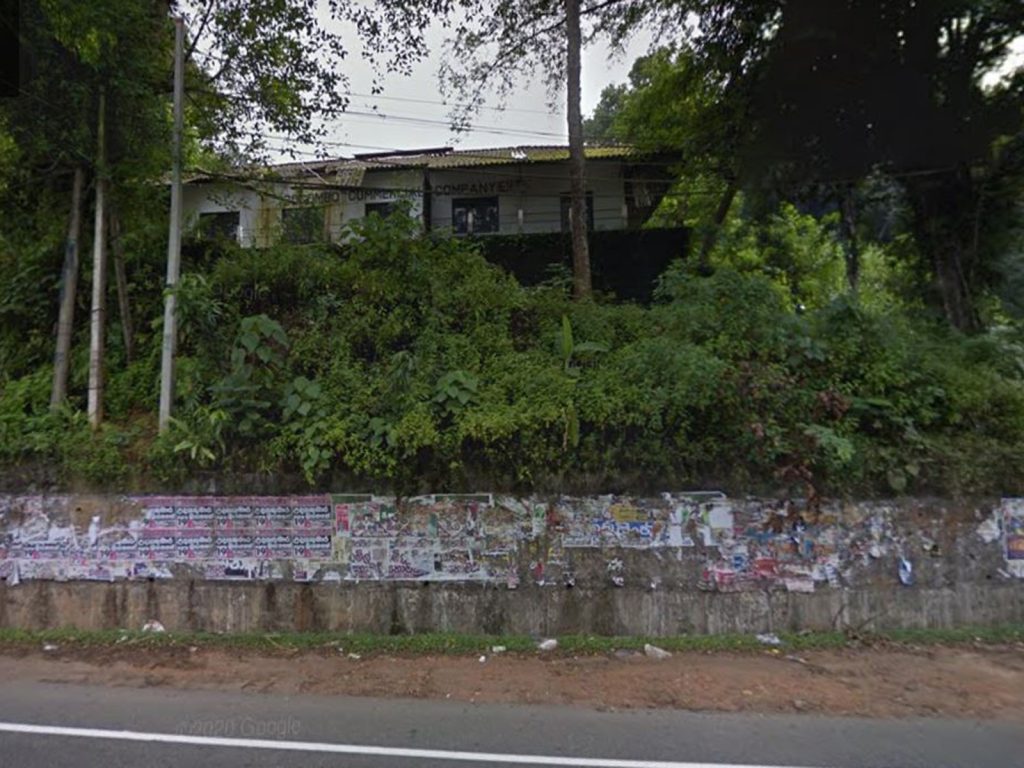It’s a road between bigger places, not in itself remarkable. Slow and windy as it starts the first climb from the coast towards the interior highlands of Sri Lanka. Bounded by pepper and rubber, and then the first untidy tea plantations, the road navigates its way through the ribbons of ridges and valleys that lap up against the south-western escarpment of the central massif. The tea here is known as ‘low grown’ and gives a dark, bitter, astringent liquor, enjoyed sweetened and flavoured with cardamom in the Middle East and Russia. It has a significant export market, although regarded with some disdain by devotees of the traditional lighter, fragrant, ‘high grown’ teas of the highlands.

Dotted along the road edge are small wayside shops and stalls, called kades, serving, not the SUVs and saloon cars intent on negotiating each bend and focussed on reaching the next big town, but the pedestrians and cyclists moving between homes and work, running errands and checking on neighbours. Livelihoods in these kades are meagre and proprietors keep a tight rein on their stock, supplying only what their customers want and can afford. Stopping at one such place to see how tea is sold, we were greeted with a broad smile. Tea? Most certainly. Sitting prominently in a medium-sized lidded plastic barrel at the very front of the counter is a plentiful supply of loose tea. It comes from local producers who deliver regularly. The requested hundred grams is scooped out, weighed, then poured into a thin plastic bag and carefully knotted to keep it safe and dry. Pleased to do business and glad you like my shop, hope you enjoy the tea.
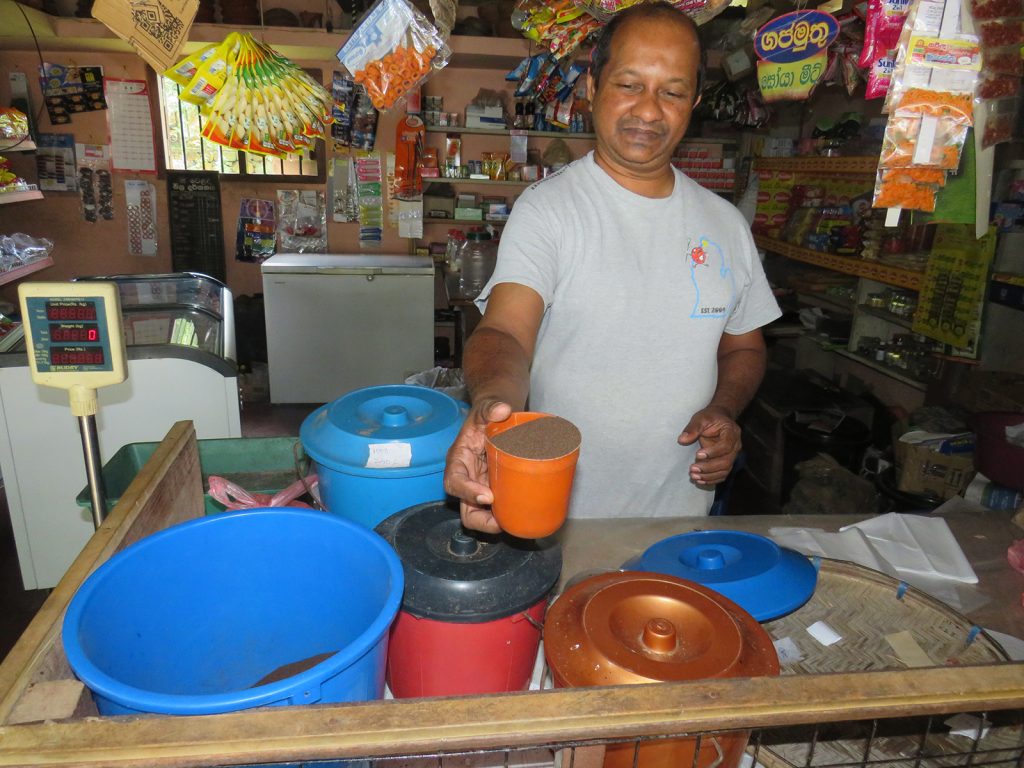

Further along the way we made another stop to see how local travellers took their ‘plain tea’, the small portions of highly sweetened black tea that revive and refresh weary workers on hot, humid days. This time it was a very humble establishment comprising a cascade of mutually-supporting lean-tos and giving the impression of both longevity and teetering vulnerability. Clearly times were difficult. The fire was unlit and no pot of water sat quietly simmering. Nonetheless two or three more elderly neighbours or friends, including a newspaper reader, loitered, waiting for something. Yes, of course plain tea was available, take a seat. The proprietor shuffled to the back of the darkened space, retrieved a flask and poured hot water into a deeply stained cloth strainer looking like a sock sewn to a wire hoop. The clear stream of hot water entering the sock exited instantaneously, a dark tarry colour. Even with robust additions of damp sugar, the tea was strong, and bitter enough to dry and scale teeth enamel. The term for this is ‘kahata‘. Lurking behind the flask and cups, we’re shown a plastic bag full of spent tea leaves. I hoped this was intended for a compost heap but feared it was about to do a second term in the sock sieve.

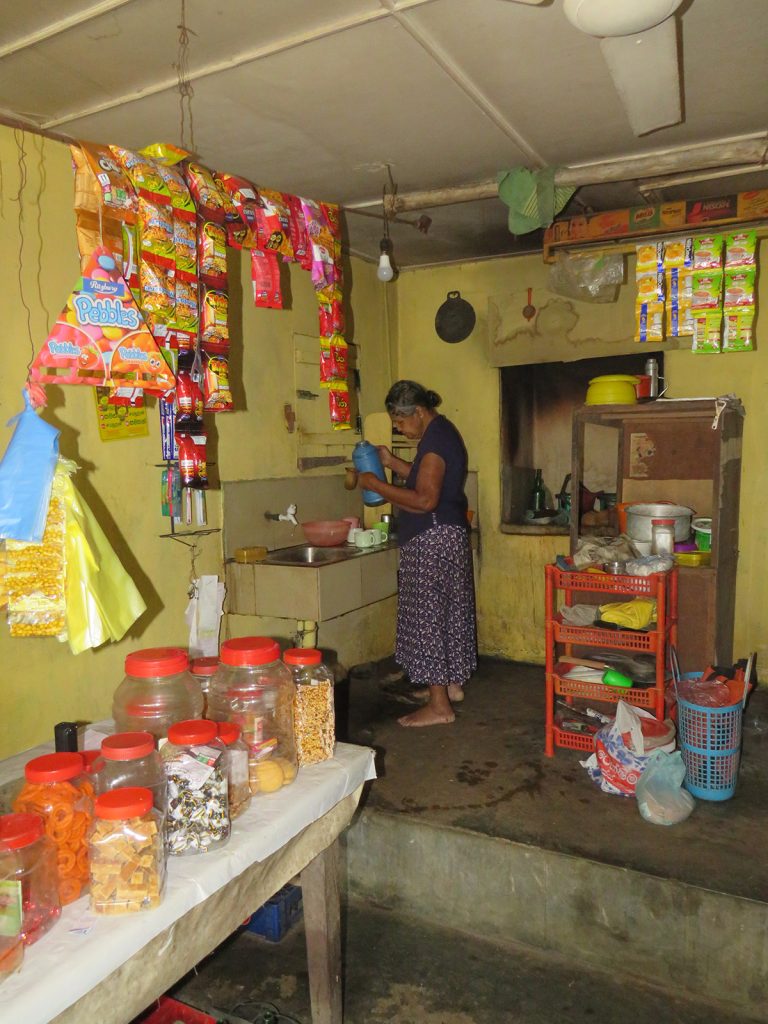
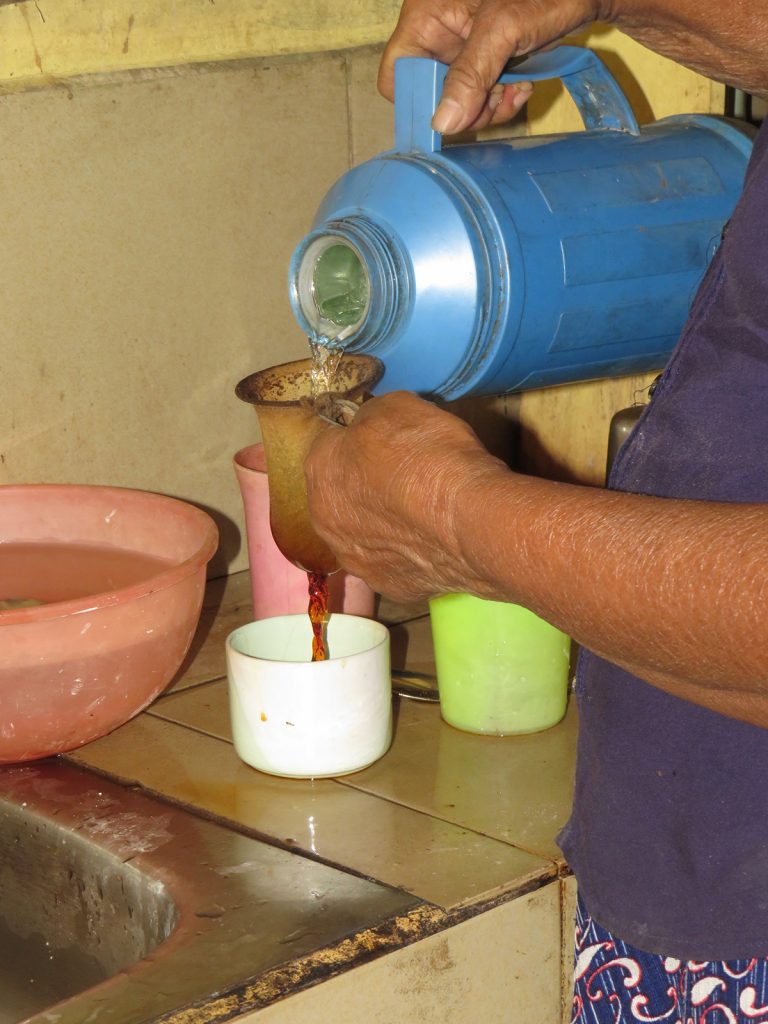
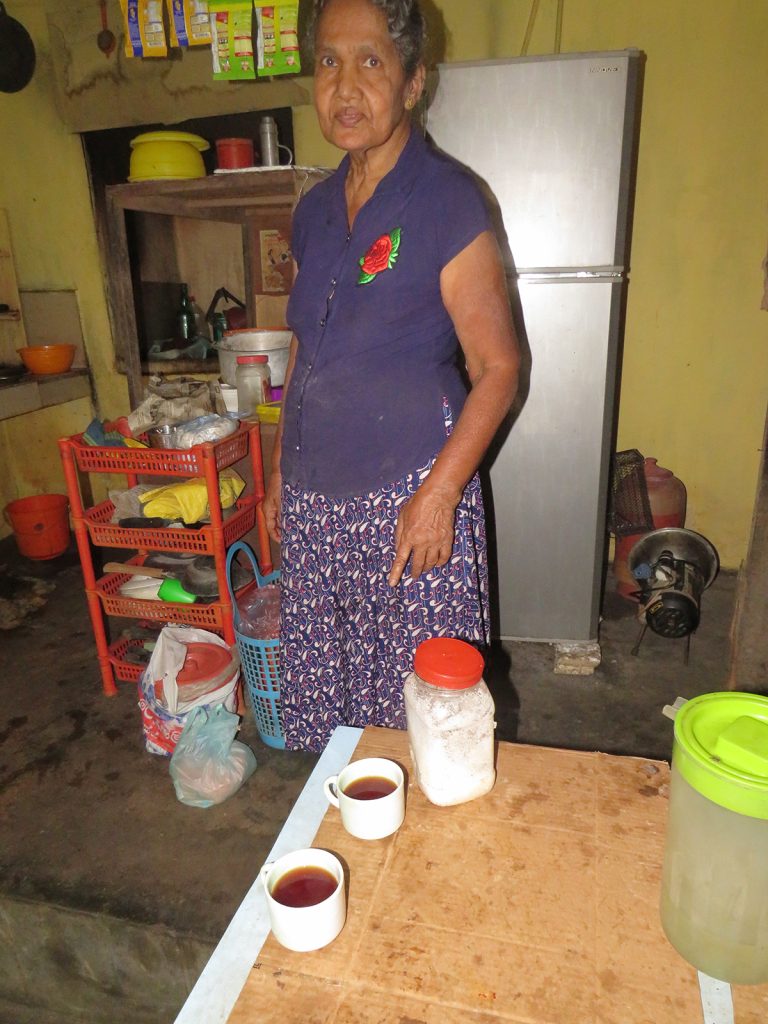
Only after sampling her brew did the proprietor warm to our conversation. The tea stop has been here for many years. It had been put up by her husband but he passed away some time ago. She maintained the establishment out of loyalty to him. Her slow and ponderous movements suggested it was an arduous duty. Her home was also clearly used for a variety of purposes as lying on the floor of what looked to be her sitting room retreat was a pile of freshly plucked tea leaves, possibly from her own garden and waiting to be collected by an intermediary to be taken to a local factory for processing.

Before departing and after paying ten times the embarassingly modest and unprofitable asking price and thanking her and her friends for making us welcome, we noticed the last of the lean-tos was making use of the substantial trunk of an uncommon and mature cannon-ball tree (Couroupita guianensis). Called cannon-ball for the large spherical fruit that grow from its trunk, the tree is often confused with the Sal tree (Shorea robusta) which has religious connections with both Hinduism and Buddhism. Our cannon-ball tree had a profusion of large, sweet-smelling flowers just out of reach. The youngest and fittest among the gathered family and friends nimbly scaled the lower branches to retrieve a couple of blossoms for us, showing us the delicate internal ‘stupa’ at the centre of the elaborate flower, undoubtedly confirming its Buddhist associations. The sweet scent of the blossoms sitting on the dashboard accompanied us to the next big town.
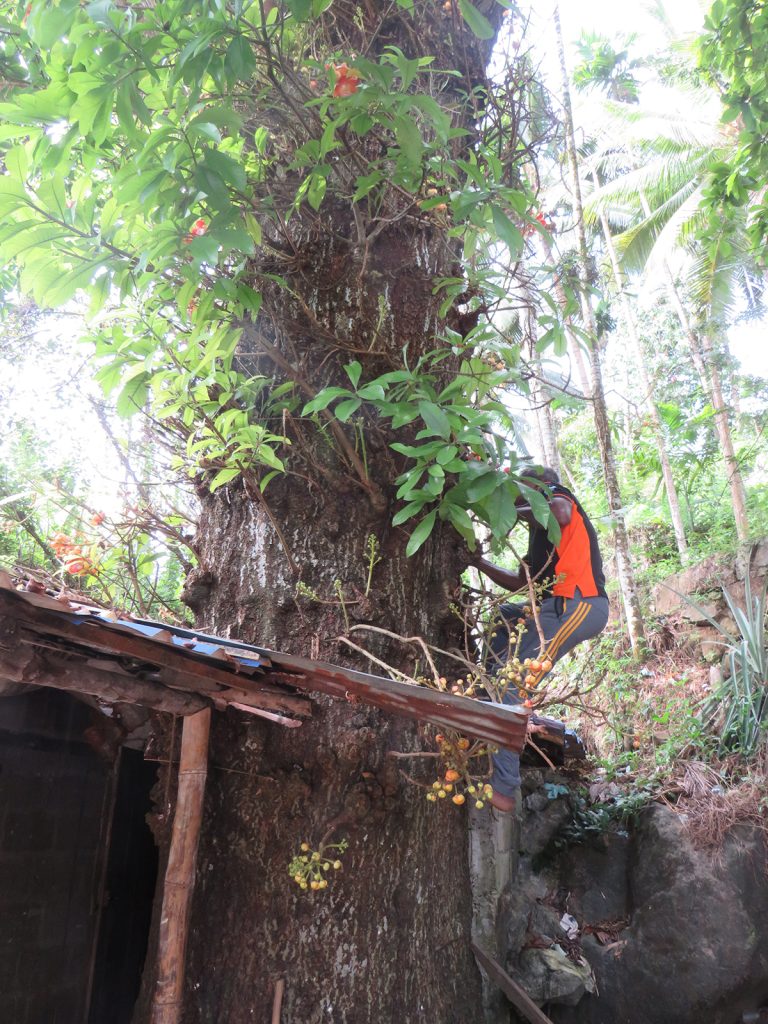
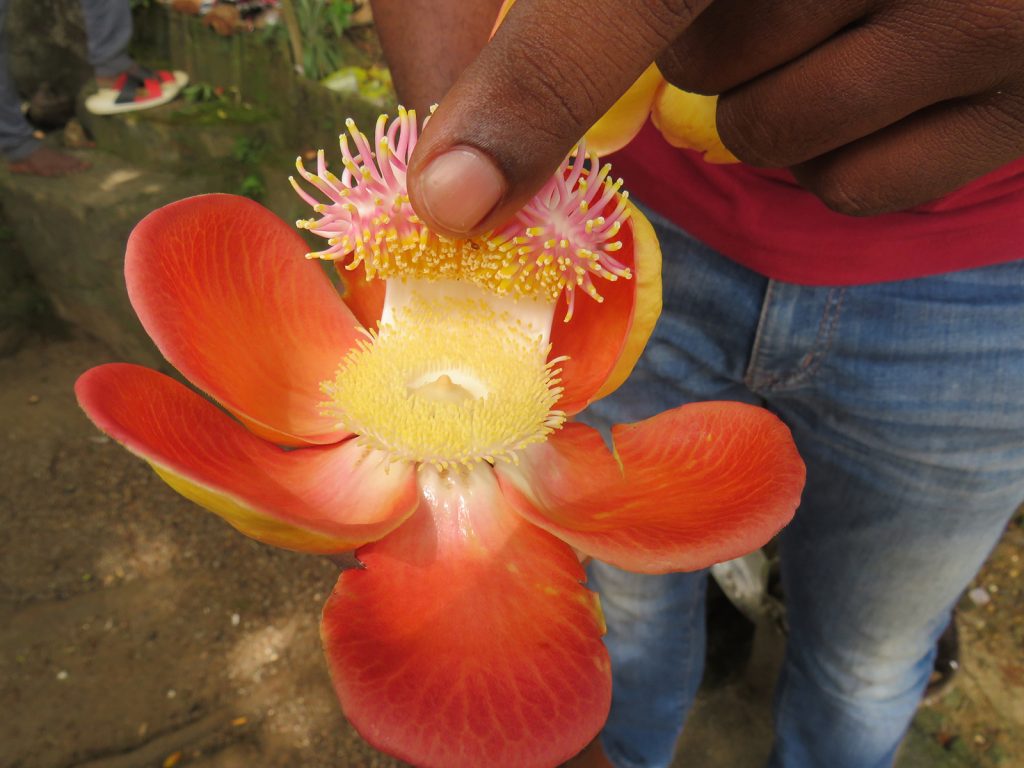
A little further along we spotted another wayside kade boldly displaying a large consignment of brightly packaged tea alongside locally collected and bottled bee honey, or perhaps it is kittul (palm) syrup. In foil and thick paper packaging with well-designed labelling in Sinhala, and with QR and bar codes, this was a very attractive, up-to-date commodity aimed at a local market. Stopping to ascertain the origin of the tea, and thinking it might be a new local venture, we discovered it derived from further south in the Matara area, still within the ‘low grown’ region. Perhaps an enterprising trader had very recently passed this way promoting a new product for those preferring to have their tea fresh in small 100g packets.
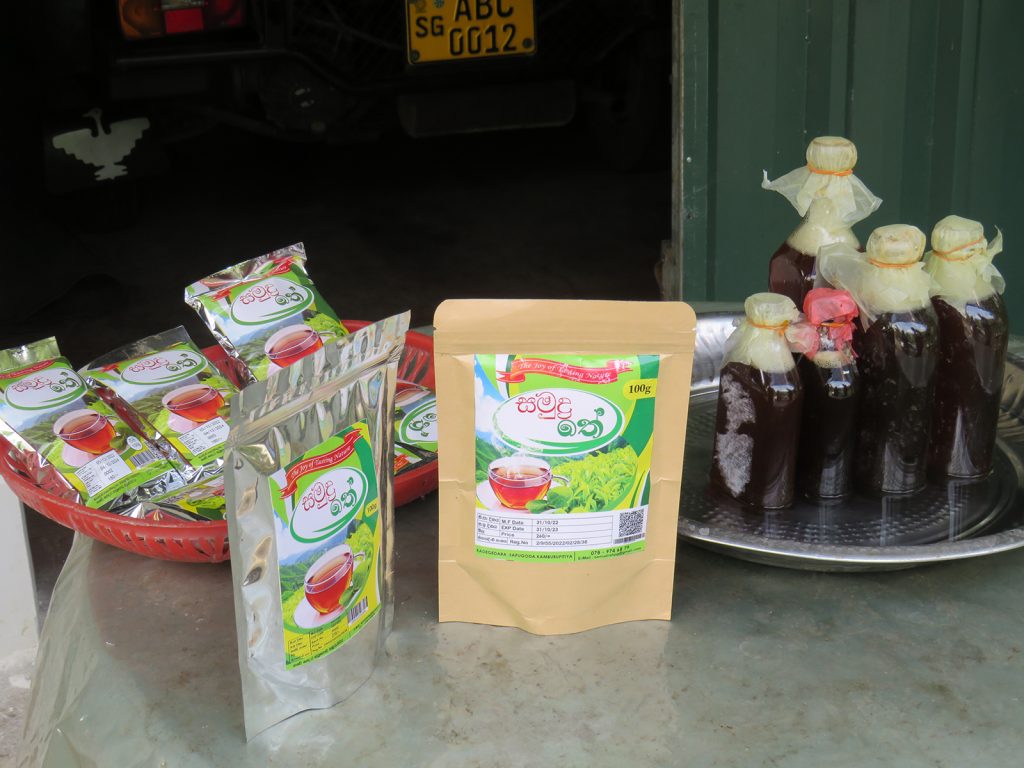
Eventually our journey brings us to the regional city of Ratnapura, the city of gems at the core of the steamy, rain-sodden Wet Zone. Although unappealing, with an air of damp decay, Ratnapura is wealthy and has more than one state-of-the-art supermarket supplying a burgeoning busy and mobile middle class. Here almost an entire aisle is given over to tea, and the choice is vast. For those with more disposable income there are 200g and 400g packets, and if you’re shopping wisely there are promotional offers. Here packaging and brand are paramount. English and Sinhala are used side by side and company names include the historic British Lipton’s and Steuarts, conjuring a past era of quality and solid dependability. There are newer names, Zesta and Mlesna, arising in the last four or more decades from the liberalisation and fragmentation of the industry. High-grown traditional lighter teas dominate and the imagery evokes the freshness and reinvigorating properties of tea. A few still draw on the image of the happy, smiling tea-plucker and the rolling green carpets of the plantations, while the best known of the new brands, Dilmah, reduces the message to the simplicity of the natural green tea leaf.
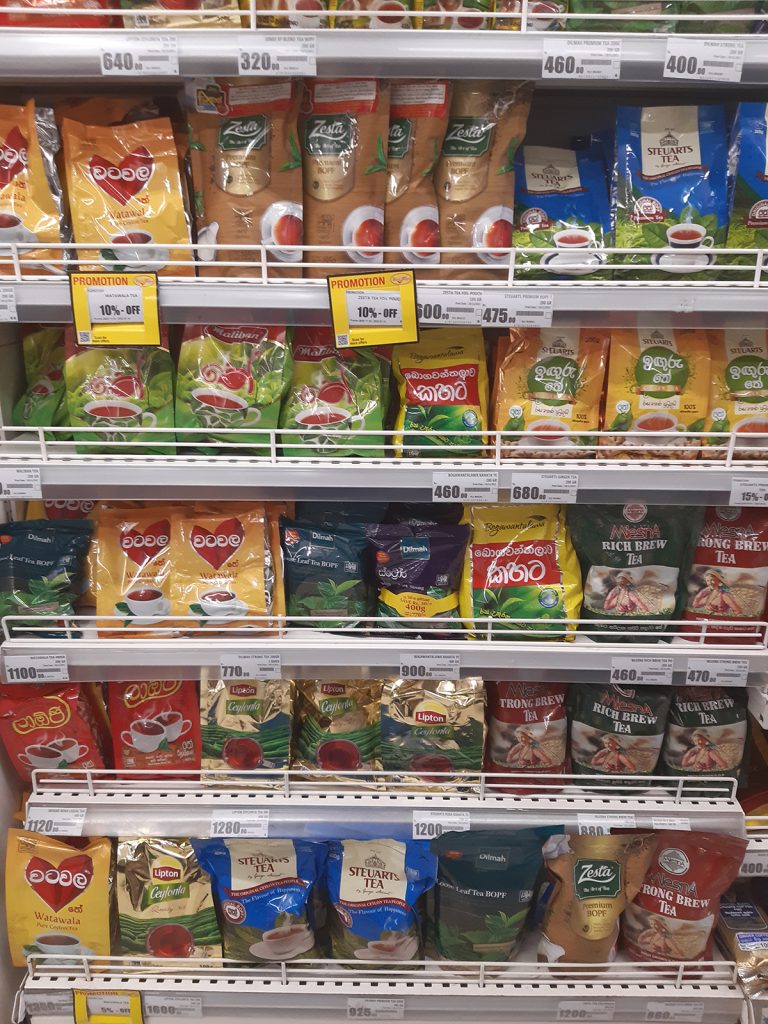
On leaving Ratnapura to climb further into the highlands and the heart of the tea plantations, a final reminder of the once all-embracing tea industry sits neglected and forgotten by the side of the road on the edge of the city. The regional headquarters of the Colombo Commercial Company, the engineering and estate management enterprise first set up in 1872 by John Burn, a Scottish engineer, to construct and supply the complex and specialist machinery need to run the production lines in the tea factories; rollers and mills and roasters, along with engines and boilers and conveyors. Generations of young engineers and managers found their training with CCC and nurtured lifelong loyalties and friendships.
